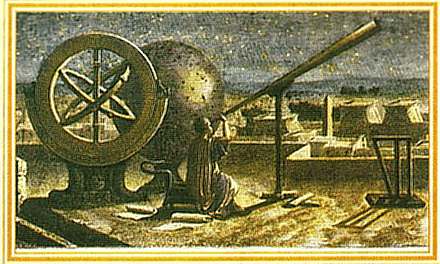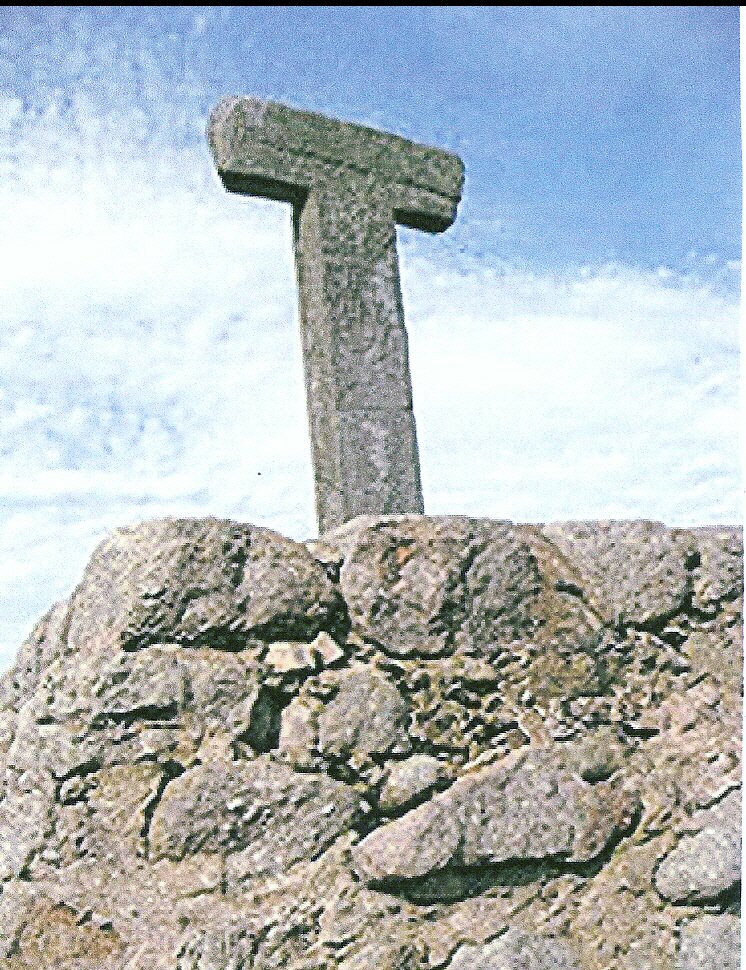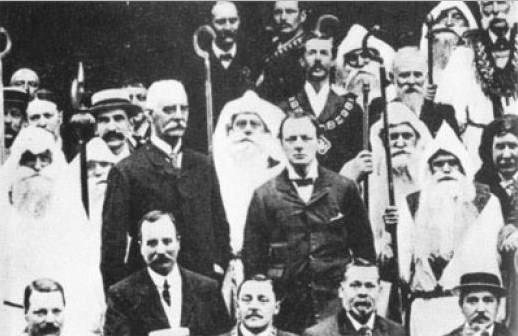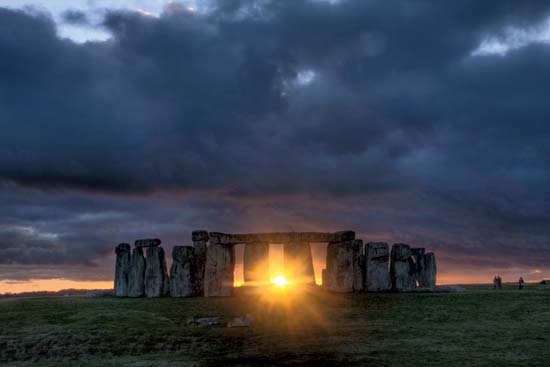The telescope was known to a very few of the priests, and kept by them in private for the use only of the persons initiated  into the higher mysteries.
into the higher mysteries.
(By Sir Godfrey Higgins) – Many persons have thought that the Druids and the ancients generally had the use of telescopes.
According to Strabo,‘ a large mirror was elevated on the summit of the temple of the sun at Heliopolis, to reflect into that temple the full splendour of its meridian beam, whilst another of still larger dimensions was placed on the Pharos at Alexandria, in such a manner as to reflect ships approaching Egypt at a great distance, and imperceptible to the eye. Mr. Maurice has observed, that if these had been metallic reflectors, instead of glass tinned, they must soon have been corroded. That does not seem to me to follow as a necessary consequence. But we know the ancient Egyptians did possess the art of making glass, as is proved by the glass netting of beads, which I saw spread on the breast of a female mummy in the Museum of Lyons. It came from the royal catacombs at Thebes. This female was probably of the Memnonian race, consequently very ancient indeed, because she was a Negress.(female black)
Diodorus Siculus says, that in an island west of the Celte, the Druids brought the sun and moon near them, whence some have suspected telescopes were known to them. The ancients knew that the milky way consisted of small stars; this, it is thought, that they could not have known without telescopes;
The expression in one of the Triads, of the moon appearing to be near the earth, is curious, and Mr. Davies suspects from this, that the Druids knew the use of the telescope. These Triads every one must allow to have existed long prior to the discovery of telescopes in modern times. In one of them it is written: Drycfi a6, Cibddar or C ilidawr, the speculum of the Son of pervading glance, or of the searcher of mystery, as one of the secrets of the island of Britain.
The Triads insist on the knowledge which the Druids possessed of astronomy. And although the Greeks give the Metonic cycle to one of their countrymen, Hesiod names the great year as known in the regions of Pluto long before Meton’s time.” There is very good reason to believe, that the regions of Pluto were the countries where they feigned the Cimmerian darkness to be: probably Gaul or Britain was the empire of Dis.
On this subject much very curious information may be found in the sixth chapter of the second volume of the Orz’gines of Sir William Drummond. But I think all his reasoning goes to prove, that although the telescope was known to the most ancient astronomers, who may be supposed to have invented the N eros, yet, that like the principles of the ancient formulas of India, it was lost and unknown in the time of Hipparchus.
Sir William supposes, that the ravages and destruction caused by the Iconoclasts of Persia, had caused the loss of the science in Chaldea and Egypt. I confess this is not satisfactory to me. I think he must go back to an earlier period. He points out the curious circumstance that the Persians had traditions of several astronomical facts, one of which was, that the Galaxy consisted of stars, which could not have been known without glass lenses. But he acknowledges that this was merely a tradition; and this certainly is all in favour of Baillie’s doctrine. There is one supposition which, as it appears to me, may be reasonably entertained, and may, perhaps, go a long way towards removing much of the difficulty, which is, to suppose that the telescope was known to a very few of the priests, and kept by them in private for the use only of the persons initiated into the higher mysteries.
By Sir Godfrey Higgins from his book, Celtic Druids

Moe is the founder of GnosticWarrior.com. He is a father, husband, author, martial arts black belt, and an expert in Gnosticism, the occult, and esotericism.






![How one in the province of the Northumbrians, rose from the dead, and related many things which he had seen, some to be greatly dreaded and some to be desired [Circ. 696 A.D.] | Book 5 | Chapter 11 How one in the province of the Northumbrians, rose from the dead, and related many things which he had seen, some to be greatly dreaded and some to be desired [Circ. 696 A.D.] | Book 5 | Chapter 11](https://www.gnosticwarrior.com/wp-content/plugins/contextual-related-posts/default.png)
This has been my analogy. Simply by the proof of maps and inscription it is evident of the advancements of the people. It is also evidence that the Elite have tampered with and hid from us Peons these advancements. Just as hey crushed Tesla.